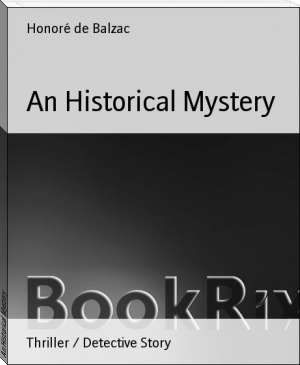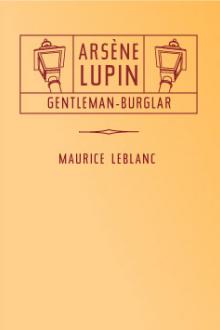The Forgotten Painting, Gabriel Farago [book recommendations for young adults .TXT] 📗

- Author: Gabriel Farago
- Performer: -
Book online «The Forgotten Painting, Gabriel Farago [book recommendations for young adults .TXT] 📗». Author Gabriel Farago
Over the next three hundred and fifty years, the crypt was modified and expanded many times by emperors who wore the crown of the Holy Roman Empire, the Austrian imperial crown, and the Hungarian crown of St. Stephen. Today, it is perhaps the most significant and unique burial chamber in the world.
What makes the Imperial Crypt so unique is the fact that with one exception, all one hundred and forty-five persons buried there belong to one family, the Habsburgs, and include twelve emperors and seventeen empresses. As a depository of European history, it is unparalleled.
As tradition demanded, most of them were embalmed after dissection. Their brains, innards and eyes were placed in copper urns and laid to rest in the Duke’s Crypt in St. Stephen’s Cathedral, the famous Stephansdom. Their hearts, however, were placed in silver jars and taken to the ‘Hearts Crypt’ of St. Augustine’s in Vienna.
Open to the public, the crypt is one of the little hidden gems of Vienna. A stairway to the right of the church leads down into the crypt below.
Jack was early. This was quite intentional as he wanted to arrive ahead of the crowds. Before entering the Habsburg necropolis, he unfolded the relevant pages of the Francis diary he had copied and, taking a deep breath, entered the crypt.
Nothing could have prepared him for what was waiting inside. Rows of magnificent sarcophagi, each a masterpiece of artistry and craftsmanship, lined the walls of the crowded burial chambers, the subdued lighting making the marble, bronze and silver gleam, and giving the sculptures and reliefs decorating the sarcophagi an almost lifelike glow. Grinning skulls with crowns, weeping angels, upturned hourglasses, imperial coats of arms, lanterns, dragonflies and candles—potent symbols one and all—greeted the visitor with messages of the fleeting fragility of life, and the certainty of death. A cold shiver raced down Jack’s spine as he found himself momentarily alone with the famous dead who had ruled one of the greatest European empires for centuries.
Jack steadied himself and reread the entry he had highlighted in the diary and knew almost by heart:
By now the Russians had complete control of the city, and the Capuchins who had given me shelter asked me to leave because they were afraid of the consequences of harbouring a dangerous fugitive like me. I was no longer safe and knew I had to leave the painting behind. I asked one of the Capuchin fathers for advice. He suggested I hide the painting in one of the sarcophagi. An excellent solution, I thought at the time. We unlocked one of the chests with an elaborate key. Together, we opened the heavy lid, and I placed the painting on top of the wooden coffin containing the embalmed body of the deceased. To my surprise, the father handed me the key.
Here it comes, thought Jack; damn! The next page began with a description of the sarcophagus, but the writing had been almost completely destroyed by water damage, as was the rest of the diary. Jack ran a trembling finger along the top line that was still legible: the simple sarcophagus stands on a podium and is decorated with...This was the last legible entry in the diary and there was no additional information or clue as to the identity of the deceased.
Jack looked at the gleaming rows of sarcophagi, a wry smile creasing his face. Where are you? he pondered walking slowly from chamber to chamber, each filled with the burial monuments of emperors and empresses long gone and faded into the pages of history.
Jack realised that without additional information it would be impossible to identify the sarcophagus containing the painting. The only thing left was the key. He reached into his pocket, pulled out the key he had found in the grave in Berchtesgaden, and held it up. To which one do you belong? he asked himself, walking slowly from one monument to the other, each protected by an elaborate alarm system. It soon became obvious that a different approach was needed.
* * *
‘I went to see the custodian of the crypt later that day’, said Jack, addressing his audience at the auction. ‘I told him about the Francis diary and the extraordinary story of the painting. I then showed him the key. He confirmed that it certainly looked like one of the many coffin keys belonging to the crypt, but he was otherwise noncommittal. Behind the veneer of Austrian politeness, he appeared displeased, annoyed even, about the whole affair. However, he did indicate that for every sarcophagus there are two keys. The Capuchin fathers are the custodians of one, the other is kept in the spiritual treasury chamber in the Hofburg.’ Jack paused, collecting his thoughts.
‘He then showed me politely to the door. On the way out he told me that all the keys kept by the Capuchins were accounted for, but he couldn’t comment about the keys kept at the Hofburg. His parting words of advice were that it would be best if I were to forget all about this, as opening one of the sarcophagi on some kind of treasure hunt, however intriguing, was unthinkable.
‘I had to leave Vienna the next day and that’s where matters rested until I contacted Mr Krakowski in London. It was time to tell him all about this extraordinary story and see what he had to say about it, and what he suggested we should do.’
Jack looked at the auctioneer standing next to him. ‘What happened next is another remarkable piece of this puzzle, and if we haven’t exhausted the patience of everyone here, it would be best if Mr Krakowski were to tell you about it.’
Smiling, the auctioneer stepped forward. He had carefully watched the potential bidders sitting in front of him and gauged their reaction. He was convinced that they were as fascinated and intrigued by Jack’s story as he was, and were eager to learn more. He therefore had no hesitation in inviting Benjamin Krakowski back to the podium.
‘Ladies and Gentlemen,’ began Krakowski quietly, ‘when Mr Rogan contacted me in London and showed me the Francis diary, I found it difficult to come to terms with what was happening. The painful past I had tried so hard to put behind me was once again closing in. Five years earlier, we had exhumed my brother’s body from a mass grave in Austria as part of the prosecution of a notorious Nazi war criminal. However, the information contained in the diary was not only convincing; it left no doubt about the veracity of what we were dealing with. Once again, I was swept up by destiny and fate, irresistibly. Needless to say, I couldn’t just walk away from all this, tempting as it was at the time. I owed it to my murdered family to investigate the matter further.
‘Once again, fate intervened. I was due to give a concert in Vienna a month after Mr Rogan’s visit, and we agreed to meet there and see what could be done. We had one valuable contact in Vienna, Dr Otto Gruber, who had assisted us in locating the Nazi mass grave. Dr Gruber, a high-ranking public servant, had excellent connections in high places. As it turned out, Dr Gruber came up with an ingenious plan to help us.
‘My concert in Vienna had received a great deal of publicity. This was in no small part due to the fact that I would be bringing the Empress, my famous violin, with me. Those of you who have read Mr Rogan’s book, Dental Gold and Other Horrors*, would be familiar with the violin’s turbulent history. The Empress is named after Empress Elisabeth, affectionately known as Sisi, the wife of Emperor Franz Joseph. Both she and her husband are buried in the Imperial Crypt.
*Dental Gold and Other Horrors is another title used here for The Empress Holds the Key which is Book One in the Jack Rogan Mysteries Series.
‘Sisi is without doubt the most famous Habsburg in Vienna today. Visitors are bombarded with information and anecdotes about this famous woman and her tragic life. In short, Vienna has made her a tourist and publicity icon, and Dr Gruber came up with a cunning idea to exploit this and enlist the help and cooperation of the authorities to assist us in our search for the sarcophagus fitting the key. He suggested that after the concert, I give a small solo performance in the Imperial Crypt. I would be playing my famous violin, the Empress, in homage to Sisi.
‘As it turned out, this was embraced by the city fathers with great enthusiasm, and thirty or so hand-picked guests, including the president of Austria, were invited. This unique event was a huge success, and turned into a moving tribute to one of Austria’s most loved monarchs. The papers around the country carried the story on the front page the next day, the huge publicity paving the way for the official cooperation and permission needed to proceed with our search.’
Krakowski pointed to the painting on the easel next to him. ‘As you can see, ladies and gentlemen, the search was successful. We eventually located the sarcophagus, opened it with the key Mr Rogan had discovered in the grave in Berchtesgaden, and found the painting—undamaged—resting on top of a wooden coffin, which was draped in black velvet and gold. The sarcophagus, which stood on a podium, just as described in the Francis diary, was decorated with an inscription plate, ivy wreaths and lion head handles. However, how we finally located the sarcophagus is an extraordinary story in itself, which Mr Rogan may perhaps one day write about. But for now, ladies and gentlemen, this is more than enough, and I thank you for your patience in listening to this rather long account of the painting’s journey from my parents’ home in Warsaw in 1943, to the auction that is about to begin.’
Krakowski turned to the auctioneer standing behind him. ‘Mr Auctioneer, I think it is time ...’ Krakowski bowed to the audience and returned to his seat, as deafening applause erupted in the room.
The AuctionBasking in the excitement all around him, the auctioneer stepped up to the microphone and adjusted his bowtie. Then, taking a deep breath, he reached for his gavel and held it up to calm the potential bidders, brimming with anticipation. It was the obvious signal that the auction was about to begin.
‘Ladies and gentlemen, the moment you’ve all been waiting for has arrived’, said the auctioneer and turned towards the painting. You’ve just witnessed something rarely seen at auctions like this: an eyewitness account of the painting’s extraordinary history from the very people who were involved in its unique provenance. It isn’t often that a masterpiece like this, with such a unique history, comes on the market. Yet here it is, for sale. And you’ve heard what will happen to the proceeds. A worthier cause than the Rosen Foundation is difficult to imagine.
‘I’m sure you’ll agree that every major gallery around the world would be proud to own this masterpiece. I’m in your hands, ladies and gentlemen. I give you … Claude Monet’s Little Sparrow in the Garden.’
The auctioneer paused, letting the tension grow, the anticipation on the faces in front of him a clear reflection of what was about to happen. ‘Do I have an opening bid?’
‘Twenty’, a man’s voice called out from the second row.
‘Twenty million pounds I have’, said the auctioneer, nodding in the bidder’s direction. ‘Twenty million it is. Any advances on twenty million?’
‘Twenty-five’, said a lady at the back.
‘That’s the spirit; thank you ma’am.





Comments (0)